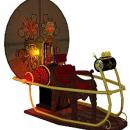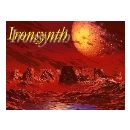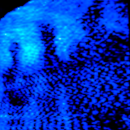Hola , mirad lo que vuelve a decir Jerry de korg USA : Es un ladrillazo pero dice cosas interesantes ., aver si hay alguien que sepa un poco más de ingles que yo y nos sintetiza la información.Grácias.
Os pongo el link de todo el hilo:
http://www.korgforums.com/forum/phpBB2/ ... 3abde24dd3
spinoria wrote:
In all the Triton series except the triton extreme there has been ways of expanding the ROM-memory with PCM-expansions.
I guess theese PCM-expansions was necessary to expand the sound palette with sound elements that was missing to get some kind of sounds.
In the new M3, do you mean that you have PCM-waveforms that isn't used yet?
Or do you mean you can tweak the waveforms so much so you can get as much programs and combis (with a big variety) that is in the Triton Extreme?
There is a lot of creative use of the onboard waveforms to be explored yet. So we can get a lot more variety from the onboard samples in the M3. A synth is a variable sound-producing tool, not just a literal playback of basic waveforms.
Quote:
If you take the string and orchestral sound for example, I think the M3 really needs more variations of theese sounds.
Will the new programs in the USB-expansions manipulate existing PCM-string samples or is there some PCM-samples that has not been used yet in existing programs?
There is certainly more variety that can be made from the onboard samples. But you are right in that adding new samples can expand the possibilities, and provide variety. Adding new PCM might add samples of articulations not provided in the ROM, or larger ensembles, or even instruments not covered in the ROM. So USB-PCM libraries can provide that.
Quote:
I thought that the bigger PCM-Waveform library was bigger because of higher sampling rate and higher resolution in the samples. Otherwise there should have been at least as many programs and combis like the Triton Extreme.
In soft-synth/samplers it is quite common to use higher sample-rates and bit depths, since the computer can easily handle it. But the main reason that libraries get large is because of longer samples (with longer loops, loops that occur later in the sample, or even non-looped material), more sample points (every note instead of every three notes, as an example), and more velocity layers, including release velocity samples. And a wide collection of instruments etc.
In a synth/workstation like the M3 the reason for additional PCM expansion is for variety of samples/instruments, more articulations, and for types of sounds that simply weren't included in the ROM. The samples may be slightly longer than in the ROM as well.
But... your comments regarding the Extreme are not quite "right". The Extreme is the culmination of over 6 years of Triton/HI-based sound development, so it is a large collection of sounds and programming. It actually only has 160 MB of samples, so the M3's 256 is already larger. It's not the size of the ROM that generated all the sounds, it's the years of programming! So if you all were willing to wait another few years we could have released the M3 with as many sounds. But who wants to wait that long before getting to enjoy the many cool things and great sounds the M3 can produce today?
But don't worry - we intend to be developing for the M3 for a long time to come. Both more sounds for the internal PCM, the EXB-RADIAS and future PCM expansions not unlike the EXs-3 recently announced for the OASYS (but not as large, of course)!
Regards,
Jerry
Saludos de ironsynth y lo dicho a ver si hay alguien que nos puede sintetizar esta información en español , yo haré un intento.












